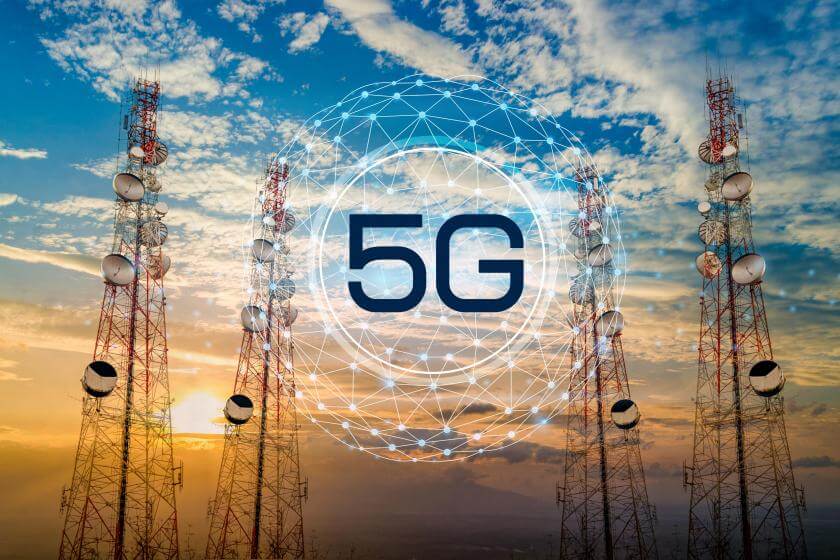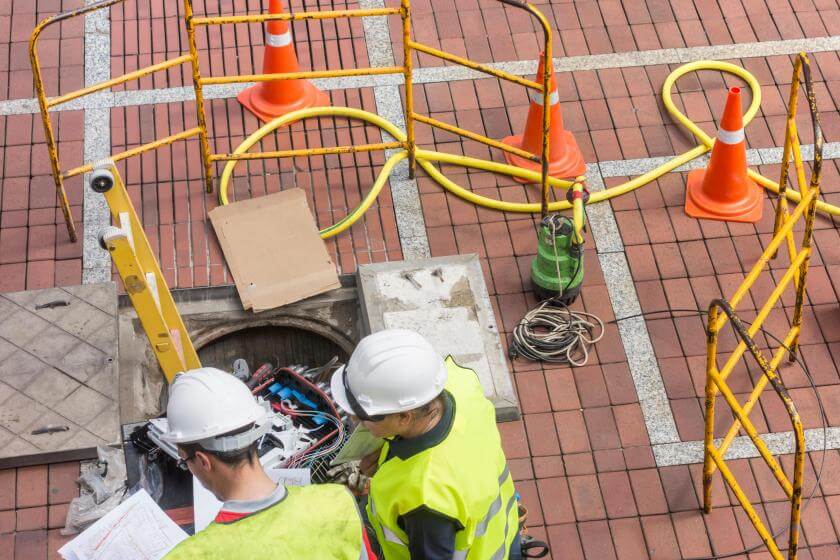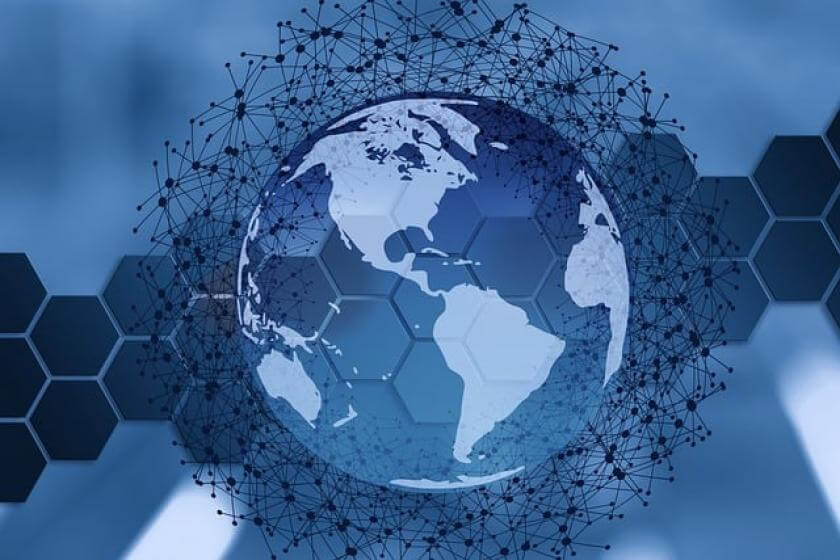Articles
Sample Articles from Bob Wallace.
Read More about Bob.
European Telcos Seek 5G Network Fees from Top Internet Users
- Details
- Published on 08 June 2023

(Source: Sarayut Thaneerat / Alamy Stock Photo)
The operators’ proposal is before the European Commission. Meta objects and warns the EC of damage to business and consumers. What’s the impact on U.S. enterprises?
A group of telcos in Europe is floating a plan whereby big tech companies accounting for over 5% of a telco’s peak average internet traffic should help pay for the rollout of 5G and broadband access.
The telcos' proposal is in draft mode, according to a report this week by Reuters. It raises questions as to whether the “build it and customers will spend” monetization approaches are enough for a profitable and justifiable business case.
The report claims the telco proposal is part of the feedback to the European Commission that began an inquiry into the issue in February, with a deadline for responses this Friday. It also claims the document was compiled by telco lobbying groups GSMA andETNO.
Making the case for 5G fees
Despite the marketing of 5G, with its superfast connections, super low latency, and purported ability to help transform the way enterprises do business, some telcos are struggling to justify the big-ticket undertakings by themselves or are uncertain whether the 5G services they offer will more than offset the initial investment.
Heavy internet users such as social media and video streaming companies Google, Meta, Amazon, Netflix, Microsoft, and Apple would seem to be most adversely affected by the so-called network fees.
Meta objects
The one public response opposing the move is in this blog by Markus Reinisch, Vice President, Public Policy, Europe and Global Economic Policy, Meta. He claims network fee proposals will ultimately hurt European businesses and consumers. Social media companies are among the top bandwidth users globally. Meta submitted its response to the European Commission's exploratory consultation on network fees.
Among the listed takeaways, the Meta executive contends:
- Network fee proposals misunderstand the value that content platforms bring to the digital ecosystem; and
- We urge the (European) Commission to consider the evidence, listen to the range of organizations who have voiced concerns, and drop these proposals.
“We support the Commission’s goal of “ensuring access to excellent connectivity for everyone,” began Reinisch. “However, proposals by a handful of telecom operators to be cross-subsidized by content application providers (CAPS) are fundamentally flawed.
Meta sees only downsides of the network fee proposal, calling fees to telecoms “a private sector handout.” The company sees fees as operators charging twice for the same infrastructure already charging consumers for internet access and potentially adding fees.
"We encourage the Commission to deeply examine the negative impacts of the telco-led proposals," said Reinisch. He went on to explain why the creation of what is effectively a required private sector handout for selected telecom operators would lead to bad outcomes for European businesses and consumers, disincentivize innovation and investment, and distort competition.
Expert insight into the 5G market
It’s early to get a take on what the telco proposal means to U.S. firms. “We remain optimistic about the European 5G RAN market and expect this segment to advance another 60% by 2025, with or without any contributions from the tech players,” explained Stefan Pongratz, Vice-President at Dell’Oro Group, a global market research and analysis firm. He specializes in 5G RAN, CBRS, Mobile RAN, Open RAN, Private Wireless, and Telecom Capex.
Pongratz, who has not yet read the telcos' proposal, provided constructive advice to operators. "Even if 5G by itself is, as expected, not fueling any material revenue growth, the reality is that providing connectivity is a profitable business. In the meantime, he claims, "operators that take advantage of the incremental bandwidth available in the upper mid-band will be in a better position from a cost, performance, and future growth perspective than those that don't."
The cost of 5G – U.S. edition
Moving to 5G incurs many costs. On the cost side alone, telcos around the world have, or are planning, to shut down 3G and or 2G networks for the spectrum and related resources to enable broad deployment of 5G. The costs are even higher when the cost of acquiring spectrum that can be used for 5G through auctions is added in.
Challenges monetizing network rollouts and service deployments are faced in the U.S. as well. In many cases, telecoms have teamed with equipment, construction, spectrum, monitoring, and integration companies to create private 5G network services as well as varying flavors of managed offerings. However, the operators have neither revealed their specific monetization expectations nor their results.
The costs of going with 5G are playing a big role in the decision making of telcos in many countries. While many, like the U.S. Japan and China are all in, much of the continent of Africa still relies on low-speed 2G. In fact, 2G networks are not being shut down in many countries as customers with IoT deployments that can’t justify the cost and don’t need the superfast speed of 5G rely on the second generation wireless technology.
Related articles:
Fiber Broadband Association Releases Workforce Development Guidebook
- Details
- Published on 08 June 2023

(Source: Islandstock / Alamy Stock Photo)
The crucial guidebook asset helps states and ISPs meet daunting broadband-for-all workforce creation challenges.
The Fiber Broadband Association (FBA) has created and released a comprehensive asset – dubbed the Workforce Development Guidebook, to equip states, ISPs, and agencies for the anticipated broadband staffing shortage.
The National Telecommunications and Information Administration’s $42.45 billion Broadband Equity and Access Deployment (BEAD) program – part of the Infrastructure Investment and Jobs Act - has begun to allot funds for the deployment of broadband services to un- and under-served U.S. areas.
The growing concern, however, is that recipients are more focused on the costs of building and maintaining the new networks for the next five years than on the daunting workforce creation efforts needed for success.
Why the guidebook is needed
The FBA describes itself as a large trade association that represents the fiber ecosystem of service providers, manufacturers, industry experts, and deployment specialists dedicated to the advancement of fiber broadband deployment. The group has helped providers, communities, and policymakers make informed decisions about how, where, and why to build better fiber broadband networks since 2001.
The FBA’s Workforce Development Guidebook notes that, according to the government’s calculations, 150,000 telecom jobs will be created by BEAD, while research by the FBA estimates the industry will need over 205,000 new jobs in the next five years to construct, operate, and maintain these new networks in every state.
The FBA warns the sudden and historic influx of public funding from the Infrastructure Investment and Jobs Act and BEAD Program will spur an unprecedented amount of construction activity and create a nationwide demand for skilled labor far beyond what the current workforce can support.
"Workforce is the second priority; construction is first," explained FBA President and CEO Gary Bolton. "We can't wait to see at the end what's left for workforce development." Increased emphasis on staffing is crucial. "Failure to ensure the availability of high-skilled labor will result in workforce bottlenecks, which will ultimately lead to higher costs and project delays.”
Those issues can have an enterprise impact. Why? Secure high-speed connections can bolster and broaden the availability of business applications for areas such as telehealth, collaboration, and education that were bearable during Covid that can be more effective and immersive. Remote and home workers can join corporate workforces. Small businesses can rise.
Planning for shortages
Telecom workers are in demand in rural areas, with service providers and their contractors seeking help with the rollout, according to Jeff Heynen, Vice-President of Broadband Access and Home Networks for Dell'Oro Group, a global market research and consultancy. Employees of a small carrier told him they were attracted to the upstart fiber provider offering a better compensation package than Tier 1 operators.
“There is just so much demand in terms of new projects that the existing workforce can’t handle it,” Heynen explained. “Also, I believe there is more churn now among operators, with workers leaving companies for new fiber entrants who are promising better pay and benefits.”
In anticipation of labor shortages, the NTIA included workforce planning requirements in its Notice of Funding Opportunity (NOFO), “forcing states to consider on the front end how to ensure enough high-skilled workers are available to deliver funded projects. The NTIA outlines key components of a workforce plan that states must consider and respond to in their Five-Year Action Plans, including training and workforce development activities, skilled workforce activities, labor and employment laws, and contracting requirements.
The guidebook emphasizes training and upskilling
While those components are instrumental to creating a prosperous workforce ecosystem, the FBA claims its Workforce Development Guidebook “primarily focuses on training and upskilling activities. It provides context on the telecommunications landscape, broadband workforce development, and practical guidance on how to craft and deploy an effective workforce development strategy.”
The FBA took on the workforce development challenge in the wake of the passing of the Infrastructure Investment and Jobs Act, under which it quickly engaged with 23 states to roll out the Optical Telecom Installation Certification (OpTIC) program with their community college systems and fiber-optic broadband service providers. Today (a year later), the number of states sits at 38, according to Bolton.
"The challenge for us is the 18 to 25-year-olds," Bolton explained. That is in part because much of the current U.S. workforce is far older. "We need to get young people interested in telecom jobs and careers."
In the guidebook, the efforts of several states that have already addressed the workforce development challenges are discussed. Included are Ohio, Vermont, and Maine – each with varying paths to the same goal. “States haven’t waited on BEAD,” noted Bolton.
Beyond the 18-25 age group, states are also looking to attract military veterans, previously incarcerated individuals, and those with autism. The FBA has considered the value of self-paced learning versus full-classroom education approaches.
One challenge the FBA is considering is how to lure staff from their current jobs into telecom by looking to replace some of their earnings with a stipend to incentivize them to learn while working.
Another observation focuses on the variations of training for the broadband rollout effort. Some large carriers have daylong boot camps, while other programs offer 2,000-hour apprenticeships.
The FBA teamed with Cartesian, a research and strategic consulting firm, to create the guidebook.
Related articles:
U.S. Firms Face Daunting Challenges with 3G Network Shutdowns Internationally
- Details
- Published on 18 May 2023

(Source: Jorge Pérez / Alamy Stock Photo)
Slow speeds, security issues, and a higher cost of doing business exist as countries take different tacks on wireless network evolutions.
The sunsetting of 3G wireless networks is over if your enterprise isn’t a multinational. But if your company operates, or plans to, outside the U.S., expect challenges as much of the world is playing catchup and at different speeds.
You’ll also find regions where 2G networks are being kept up and running to support crucial IoT devices, providing a cost-effective alternative to high-speed wireless. Further, developing countries that have valuable resources and business opportunities may only have 2G.
"There is a huge challenge ahead for companies trying to sell the same solutions globally as they will need to support 2G/3G technologies in order for their products to operate,” explained Susie Siouti, Chief Commercial Officer for SmartViser, a Rennes, France-based test automation solutions provider that helps organizations offer end-users high Quality of Experience (QoE) and Quality of Service (QoS). "In Africa, there is no plan to sunset these technologies except for South Africa. Similarly, Asia is a mixed bag with some countries very much ahead of the game and others not even planning.”
3G shutdown challenges near and far
U.S. businesses with multinational operations will also likely run into varying sunsetting timelines far closer to home, specifically in neighboring Canada, which is one of America's top trading partners. Canada's 3G networks are not due to be completely shut down until the end of 2025, according to Readers Digest Canada.
This is important as the North American Free Trade Act (NAFTA) has incentivized U.S. businesses to move assembly and manufacturing operations north (and south) of the border in recent decades.
In the absence of a single uniform wireless network technology globally. Companies looking to develop new products will find costs higher because they must support all new and legacy wireless solutions.
The big chill?
Widely varying wireless generation support, in some cases from country to neighboring country, could have a chilling effect that generates other concerns for enterprise IT, namely security.
"Security may also become an issue as 2G offers very weak encryption between towers and devices and can be allegedly easily hacked," added Siouti. "Replicating private network set ups from the U.S. in other countries could be difficult, especially in Africa and Asia.” Some may have to wait until 4G networks provide a better level of coverage. “It may be very difficult to prove their business case internally for entering certain markets like Africa.”
Solving the Rubik’s Cube of wireless support
There are vendors whose products for IoT devices cover the cellular waterfront.
One such vendor, Hologram.io, promises the redundant coverage devices needed today, with the flexibility to expand into new markets when enterprises are ready to scale. The company's cards allow devices to access2G, 3G, 4G LTE, 5G, and CAT-M today and upgrade as new network technologies become available. Hologram claims its SIMs allow devices to switch between over 470 carriers from anywhere in the world.
A continent-specific 3G shutdown summary from SmartViser
To complicate matters for enterprise IT planners, many operators plan to shut off their 3G networks first while keeping their slower 2G networks running until as late as 2025.
Europe’s 3G shutdown
This is the case in Europe, where 3G is expected to be switched off before 2G. Around 19 operators are planning to switch off their 3G network by 2025, and around eight operators are planning to switch off their 2G network by 2025. Telia will look to close 3G in all their countries between 2022 and 2025, and EE will be the first UK network that has announced the shutdown of 3G.
Asia’s 3G shutdown
In Asia, there are an estimated 29 operators who are looking to shut down 2G by 2025 and 16 shutting down 3G by 2025. Japan closed 3G long ago, as did Taiwan, which shut down both 2G and 3G roughly three years ago.
America’s 3G shutdown
The Americas. The U.S. shut down 2G networks, followed by 3G networks by yearend 2022. Elsewhere in this region, over a dozen operators in 7 countries have announced the closure of 2G by the end of 2025.
Australia’s 3G shutdown
Australia. 2G networks are long gone in the land down under, with the continent’s three operators shutting them down by yearend 2018. Telstra is expected to shut down its 3G network at the end of next year.
Africa’s 3G shutdown
Africa. It appears that the lights at 2G and 3G networks are on for the foreseeable future in the so-called dark continent. The spread of 4G and faster technologies is expected to eventually eclipse slower networks.
Recapping 3G sunsetting in the U.S.
Service providers using 3G technology, a workhorse for two decades, need the resources to broadly and efficiently roll out 5G.
To recap the situation, in the U.S., the three largest wireless service providers – AT&T, Verizon, and T-Mobile – all shut down their 3G networks by the end of 2022 to use resources to drive broader deployment of 5G. The trio announced plans to sunset these networks well in advance. However, Covid-19 and the resulting supply chain, workforce, and chip shortages hit companies with a trio of unexpected challenges.
The operators kept their deadlines, but several vertical industries, such as automotive, trucking, and consumer electronics, found themselves with less time to take the 3G sunsetting challenge. A flurry of software upgrades to dated devices helped most businesses and their customers survive the sunsetting, but the transition was not smooth.
Related articles:
FCC Creates New Space Bureau to Fuel Satellite Industry Expansion
- Details
- Published on 20 April 2023

(Source: Science History Images / Alamy Stock Photo)
The move is designed to give rise to Internet access and emerging satellite-to-cellular services for enterprises from SpaceX, OneWeb, Globalstar, Amazon, Iridium, and their wireless operator partners.
Acknowledging that its policies and processes could not keep pace with a burgeoning satellite services sector, the FCC Tuesday launched a new entity dubbed the Space Bureau, designed to meet the needs of the next Space Age.
What is the FCC’s new Space Bureau?
The new bureau has been formed by splitting the current International Bureau into two separate cooperative units within the agency. The Space Bureau will focus on policy and licensing matters related to satellite and space-based communications and activities, and the Office of International Affairs (OIA), which will coordinate FCC work with foreign and international regulatory powers.
LEOs at the heart of Space Bureau focus
In recent years, the second space race has already seen the FCC authorize the launch of roughly 10,000 low-earth orbit (LEO) satellites for operators looking to deliver everything from Internet access to an emerging set of satellite-to-cellular offerings that provide connectivity to those off the terrestrial wireless network grid, including S.O.S services that help those with emergencies.
The creation of the Space Bureau is the latest in a series of steps the FCC is taking to realign and expand its resources to meet the needs of a fast-emerging satellite communications sector driven by the broadening use of LEO birds worldwide.
Roughly 4,000 LEOs are currently in orbit, with another estimated 20,000-30,000 awaiting review by the FCC.
"The satellite industry is growing at a record pace, but here on the ground, our regulatory frameworks for licensing have not kept up. We're working to change that. We are moving forward with our plan to prepare for what comes next," said FCC Chairwoman Jessica Rosenworcel. "A new Space Bureau at the FCC will ensure that the agency's resources are appropriately aligned to fulfill its statutory obligations, improve its coordination across the federal government, and support the 21st-century satellite industry."<.p>
The FCC claimed in January that it has acted “to speed up regulatory review processes, increase the size of the FCC’s satellite division by 38 percent, create new opportunities for competition in the delivery of satellite broadband services, and modernize spectrum policy to better meet the needs of the next generation Space Age.”
What will the Space Bureau do?
Once the reorganization is complete, the Space Bureau will, according to FCC materials:
- Lead complex policy analysis and rulemaking.
- Authorize satellite and earth station systems used for space-based services.
- Streamline regulatory processes to provide maximum flexibility for operators to meet customer needs.
- Foster the efficient use of scarce spectrum and orbital resources.
- Adopt new rules for deorbiting satellites to address orbital debris risks.
- Serve as the FCC’s focal point for coordination with other U.S. government agencies on matters of space policy and governance.
- Collaborate with the OIA for consultations with other countries, international and multilateral organizations, and foreign government officials that involve satellite and space policy matters.
What is the enterprise IT impact of the new Space Bureau?
For enterprise IT looking skyward for new and more robust communications options, the Space Bureau could provide a growing menu of services faster, backups for cut cables/suspicious network outages on Earth, and greater competition that could contain prices and fuel innovation.
Who are the LEO satellite operators?
The list of current LEO satellite operators includes Elon Musk’s SpaceX, which is best known for its Starlink internet services, OneWeb, Globalstar, and Iridium. Amazon has vowed to join the LEO space race under Project Kuiper, which has its first LEO bird launch set for later this year.
What’s the difference between LEO and GEO satellites?
LEOs fly closer to the planet — about 350 miles above Earth for Starlink satellites — versus 22 thousand miles above Earth in geostationary (GEO) orbit. LEOs have gained ground in the internet services market, helping in the defense sector (helping Ukraine hold off invading Russian forces), maritime communications, and with agriculture.
From Internet access to satellite-to-cellular services
As operators launch LEOs to build fleets, they have more recently partnered with wireless providers and equipment vendors to offer satellite-to-cellular services for those on Earth.
The activity increase in the sector has seen Apple team with Globalstar, T-Mobile partner with SpaceX, and Iridium connect with Qualcomm to create satellite-to-cellular services. Verizon has paired with Amazon. These services provide a lifeline to traveling and mobile workers when in remote and other rural areas.
Will the FCC’s Space Bureau help operators avoid disputes?
The creation of the Space Bureau and planned collaboration with the resulting OIA could provide oversight in cases where disputes arise between satellite operators. The industry has already seen one such high-profile situation when SpaceX claimed that DISH Network’s work-in-progress 5G network will interfere with the former’s LEOs in the 12 GHz band. Time will tell.
Related articles:
- How Emerging LEO Satellites are Impacting Wireless Networking
- Exploring the LEO Satellite Service Landscape for Potential Enterprise Use
- LEO Satellite Broadband: Top Considerations for Enterprise IT
How Emerging LEO Satellites are Impacting Wireless Networking
- Details
- Published on 12 April 2023

(Source: Pixabay)
T-Mobile/SpaceX and Verizon/Amazon strategic partnerships support, via low-Earth orbit satellites (LEO satellites), connectivity plus cellular messaging and emergency offerings for iPhone and Android users beyond the reach of wireless networks.
Satellite communications providers have forged ahead, launching more than internet services, including packages that let individuals work and access emergency services when off the grid.
The activity increase in the sector has seen Apple team with Globalstar, T-Mobile partner with SpaceX, and Iridium connect with Qualcomm to create satellite-to-cellular services. Verizon has paired with Amazon.
These services provide a lifeline to traveling and mobile workers when in remote and other rural areas.
Leveraging low-Earth orbit satellites (LEOs)
These emerging satellite-to-cellular services employ a growing constellation of low-Earth orbit satellites (LEO) that fly closer to the planet — about 350 miles above Earth for Starlink satellites — versus 22 thousand miles above Earth in geostationary (GEO) orbit. They’re owned by SpaceX, OneWeb, and Iridium. Amazon has vowed to join the LEO space race under Project Kuiper, which has its first launch set for later this year.
LEOs have gained ground in the internet services market, helping in the defense sector, maritime communications, and with agriculture.
The satellite-to-cellular services
iPhone 14 users can now connect with emergency services when cellular and Wi-Fi coverage are not available. The service extends beyond the U.S. and Canada to France, Germany, Ireland, and the U.K. as of December.
T-Mobile and partner SpaceX claim that despite LTE and 5G wireless networks, well over half a million square miles of the United States, in addition to vast stretches of ocean, are untouched by cell signals from any service provider. That estimate pales in comparison to other countries and regions of the world.
The Iridium-Qualcomm team is bringing satellite-to-cellular communications to Android smartphones. Snapdragon Satellite service will first be available to devices that have Qualcomm's Snapdragon 8 Gen 2 mobile platform and are powered by the Snapdragon 5G modem. On deck is two-way messaging, with the service due up after midyear.
Startups are also working in this sector. Lynk has been working on two-way SMS capabilities with a list of operators from space. The company has already received FCC approval to launch and run a low-Earth orbit satellite fleet.
Amazon and Verizon’s Strategic Partnership for Connectivity
Not to be forgotten, Verizon and partner Amazon outlined in October 2021 a “strategic collaboration” to pair Verizon’s terrestrial mobile network with Amazon’s planned LEO satellite network. The telco wants planned Amazon LEOs to deliver cellular backhaul solutions to extend Verizon’s 4G/LTE and 5G data networks, connecting rural and remote communities in the U.S.
Verizon and Project Kuiper pledge to explore “joint connectivity solutions for domestic and global enterprises across agriculture, energy, manufacturing, education, emergency response, transportation, and other industries,” according to their 2021 announcement.
The market opportunity for satellite-to-cellular
These satellite-to-cell services are currently seen as an emerging market that may take years to gain critical mass.
"In its current stage, satellite-to-cell services are available for specialized applications but show upside potential in the years to come, with 2023 and likely 2024 being used to prime consumers' interest," explained ABI Research Inc., a global technology tracking and analysis firm. "In this respect, ABI Research anticipates that the wider Non-Terrestrial Network-Mobile (NTN-Mobile) service segment, which includes the satellite-to-cell segment, will reach 6.8 million connections by 2027.”
Issues to consider in satellite-to-cell
Applicability: The SOS capability recently announced as part of all models of the iPhone 14 – the smartphone giant’s newest entry – does not yet work with older models. Also of interest, Samsung’s newest Galaxy smartphone does not support satellite-to-cellular services.
By contrast, SpaceX and T-Mobile plan to allow most phones on T-Mobile's network to access their satellite-to-cell service. To make this happen, the duo claims it will create a new network, broadcast from Starlink satellites using T-Mobile’s mid-band spectrum in the U.S.
Availability. Satellites are expensive to build, and fleets take a long time to assemble. This impacts service launches and availability (coverage). For example, not a single satellite for Project Kuiper has been launched. However, the T-Mobile-SpaceX tandem plans a test by the end of this year.
The first services will be text-based, followed later by voice and data offerings.
The bottom line on low-Earth orbit satellites
Best known in recent years for efforts to close the digital divide with Internet for all initiatives, LEO satellite services have been embraced for providing connectivity for maritime, military, agricultural, and other applications.
What remains to be seen is how quickly the low-Earth orbit satellite’s opportunity can expand and gain broad acceptance from businesses, financiers, regulators, and countries around the globe.
Related articles:
Enterprise Broadband Expansion: Follow the Money
- Details
- Published on 31 March 2023

(Source: Pixabay)
Will enterprise broadband options improve due to government-subsidized infrastructure buildouts?
The age of unprecedented broadband expansion
Thanks to historic spending on broadband networks to service the un- and underserved, fiber providers have also attracted big money from investors and private equity firms—raising issues for enterprise IT.
Just last month, Boston-based Berkshire Partners, a diversified private equity firm, announced a sizable investment in Point Broadband Fiber Holding LLC. The Opelika, Ala. firm provides fiber-to-the-premise internet services to 75,000 homes and businesses in small towns and rural markets in nine states.
Point Broadband has previously attracted funding from GTCR, a private equity firm, which made a strategic investment in the business in 2021. Since then, the six-year-old carrier claims it added over 100,000 additional fiber passings and entered two new states.
Also last month, Texas-based Nextlink Internet last month bought the fiber operator Bluestem Networks, its fourth such transaction in Nebraska alone since 2021. Nextlink is using $400 million in RDOF funds to fund its acquisition activities.
Broadband funding programs fuel industry advancement
An infusion of broadband funding for all programs and legislation, including the American Rescue Program Act (ARPA), the $1.7 trillion Infrastructure Investment and Jobs Act, and the FCC's $20 billion Rural Digital Opportunity Fund (RDOF) is helping carriers upgrade networks and extend them to close the Digital Divide. Fiber is essentially the medium of choice for these efforts, followed by fixed wireless.
This makes carrier networks an increasingly attractive investment for private equity firms and is fueling consolidation in the sector.
"It's a unique environment out there for broadband providers, largely due to all the government money that is out there," explained Jeff Heynen, Vice President, Broadband Access and Home Network for Dell'Oro Group, a global technology research and analysis firm. "With that subsidization comes the de-risking of the investment in building out a fiber network while still maintaining the benefit of immediately increasing the value of a network by moving from copper to fiber or fixed wireless to fiber."
Carrier mergers and acquisitions
There’s been a spate of fiber carrier M&As in the last several months, as well as investments from private equity firms in carriers large and small. “With de-risking through subsidization, operators and PE firms can build scale through the acquisition of multiple smaller fiber providers,” explained Heynen. “And scale is what is needed to keep these operators solvent in the long term when the subscriber base isn't necessarily large, and there is always the threat of competition. Further, I think these acquisitions assume that there will continue to be subsidization of these networks so that they won't fail."
The fiber carrier green rush – proceed with caution?
Continued funding of fiber-focused carriers in the rush for broadband for all would seem at face value to be a win-win for the service providers and their enterprise customers. The rapid deployment of advanced optical technologies in regions that wouldn't otherwise see them is a big bonus.
But what of private equity firm stakeholders? Their standard operating procedure is to invest in needy assets, grow their value and cut unneeded or underperforming assets, including staff, to sell the carrier at a profit.
Private equity investments in broadband carriers and the firm's role in the consolidation of fiber-focused carriers need to be watched by enterprise IT, as this activity can cause disruption in crucial areas such as network performance, tech support, and customer service.
“IT managers who have businesses and/or employees in areas impacted by the consolidation, it will be very important to ensure that the service, support, reliability, and other important KPIs stay consistent with these operators potentially changing ownership once, twice, or maybe multiple times,” emphasized Heynen. “These kinds of organizational changes shouldn’t impact the SLAs customers are provided, but it’s been known to happen, especially when outside entities such as PE firms get involved looking to reduce overall costs to improve the bottom line.”
New and innovative carrier options for enterprises
Enterprise IT managers that want to minimize or eliminate the potential risk of their provider relationships during a time of historic change can opt for an established tier 1 operator. Stability and reliability are their key differentiators, though they may not effectively market them.
Enterprise IT managers can anticipate a buyer’s market as carriers look to land the business that they hope will carry them on beyond the big fiber funding years.
“I think that emerging fiber providers that target the enterprise market are going to offer more attractive packages—with better pricing, better SLAs, more security, etc. to try to target the biggest concerns of their end customers,” predicted Heynen. “We are already starting to see this on the residential side, and I suspect it will bleed over to the enterprise side, as well.”
A final word on broadband expansion for the enterprise
Multiple government spending bills and initiatives aim to bring broadband to rural areas and those currently underserved by high-speed connectivity services. If these programs deliver on their promises, IT managers will have more enterprise broadband options to serve their user based.Related articles:
